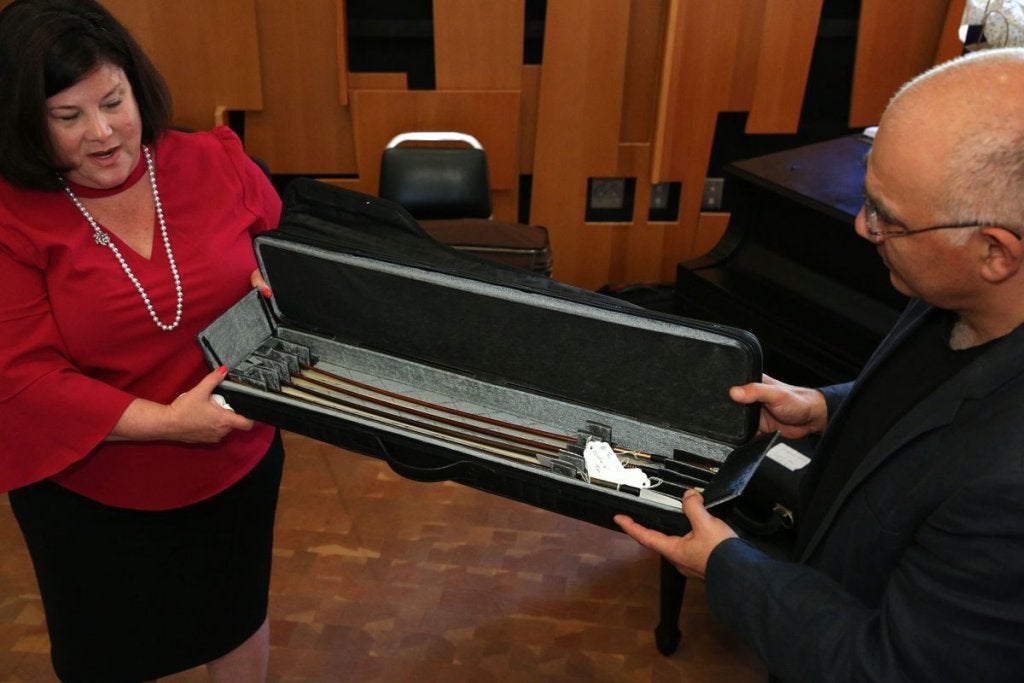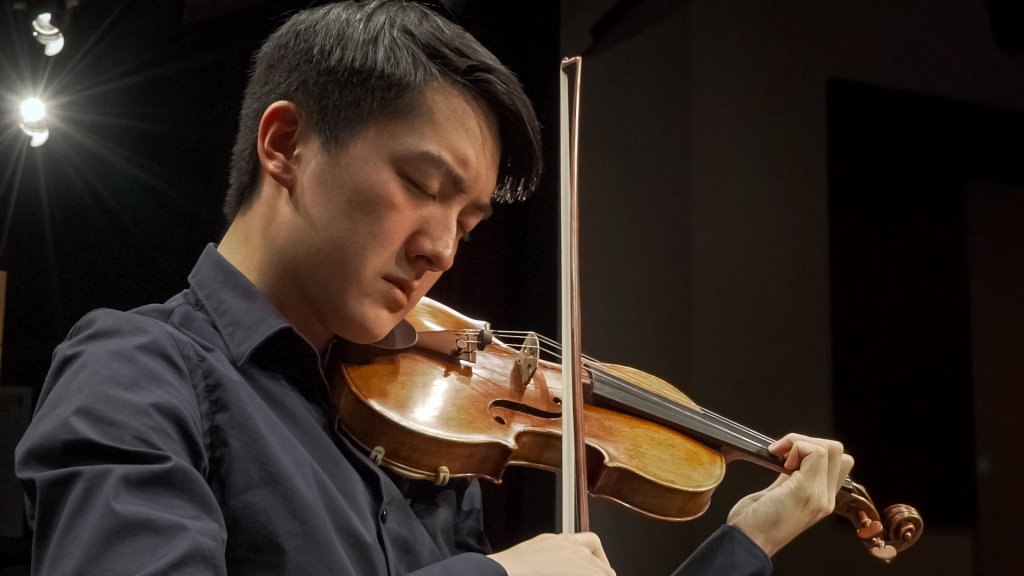The allure of a Stradivarius—any Stradivarius—is not hard to document. They are powerful, sonorous, and rare. There are fewer than two-hundred and fifty known Stradivarius violins remaining in existence, and each one has a name. To own a Stradivarius is a big deal.
UCLA has two. Thanks to a recent and generous gift from the Twiford Foundation, a second Stradivarius violin will soon be available to UCLA students.
We should start at the beginning. The Herb Alpert School of Music at UCLA has in its possession a Stradivarius violin, known as the “Duke of Alcantara.” On special occasions––such as winning a spot in the annual UCLA All-Star competition––students have an opportunity to play this extraordinary instrument for a public concert. The occasion to play a Stradivarius is usually reserved for established soloists of international fame. So, it is quite an experience.
UCLA violin professor Movses Pogossian understands the impact of this experience intimately. He recounted his days at the Moscow Conservatory, when he was loaned a Stradivarius violin to play for two years. “It taught me priceless lessons about my craft,” said Pogossian. “Lessons that still apply today.” Fine instruments, not unlike high-performance vehicles, require more skill to manipulate and to get the timbre, pitch and intensity just right. For a student, the ability to play such an instrument, even for a short while, can change one’s trajectory.
Tiffany Wee (class of 2016) experienced this firsthand. Now a student of Ani Kavafian’s at the Yale School of Music, Wee won the Atwater Kent Concerto Competition in 2017, which included a performance on the Stradivarius. To prepare for the recital, she spent several months practicing with the Alcantara. They didn’t get along so well at first.
“It was one stubborn, strong-headed force to be reckoned with,” she recalled. The Alcantara didn’t want to sound the way her violin sounded, and she quickly learned she couldn’t force it to do so. “In a sense,” she said, “I had to learn how the Strad wanted to be played.”
The Alcantara was bigger, physically bigger, than other violins Wee had played. The distance between the fingerboard and the bridge was greater. The strings were further apart. She had to adjust her bowing style to harness the violin’s power. “I was astonished by its volume,” she said. “It took my ears some time to get used to the different decibels of sound.” But once she had come to understand the Alcantara’s personality, “it brought out different colors and densities of sounds that I never thought possible.”
The Alcantara’s allure is enhanced by its own “true crime” story. In 1967, it was in the possession of David Margetts, the first violinist of the Roth String Quartet, which was in residence at UCLA. On August 2, after finishing a performance of Beethoven, Margetts loaded the violin into the back seat of his Corvair and hit the road. Somewhere between work and home, the Alcantara went missing. Had he left it on the roof of his car? Did someone steal it from the backseat when he stopped for milk on the way? A frantic search ensued, but to no avail.
A few weeks later, a retired Spanish teacher spotted a violin case on the side of the freeway. She pulled her cream-colored T-Bird Convertible to the side and retrieved it. She played it and stowed it under her bed when not in use. On her deathbed she gifted it to her nephew, who in turn gave it to his wife. It was not until 1994 that a violin repair specialist made the connection. Here was the missing “Duke of Alcantara.” It would take a great deal of effort to bring the violin home to UCLA a full year later. Now the violin has returned to its home at UCLA to enrich the studies of future generations of gifted student violinists.
In addition to UCLA’s second Stradivarius, the recent Twiford gift also includes a Sanctus Seraphin violin and a collection of high-quality violin bows to add to UCLA’s collection.

“The dark magic is in the bow,” said Movses Pogossian. Given the choice between a good violin and a great bow, or a great bow and a good violin, the professional often chooses the bow. This might seem counterintuitive. Violins, after all, captivate the popular imagination and command the stratospheric prices. But it is the bow that unlocks the violin’s sound, and can be the difference in achieving fine articulation and measured power.
Just ask Tiffany Wee. “I truthfully hadn’t thought much about bows before I got to UCLA,” she recalled. “Now I know that a great bow is just as important, if not more important, than a great violin.”
For UCLA students, the opportunity to play a Stradivarius is only the beginning.


